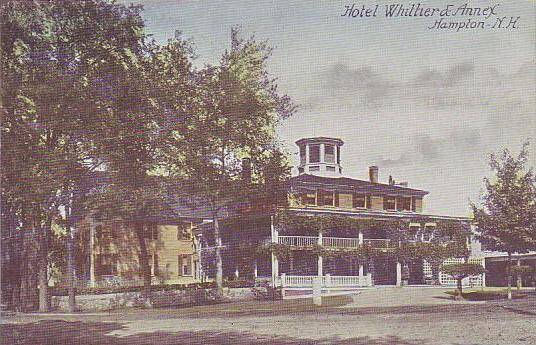Witchcraft isn’t exactly a new concept in New England. The Salem witch trials have been studied for centuries by scholars and scare-lovers alike, and many still visit the city to see the tombstones and experience the witchy vibes that inhabit the cobbled streets. But there is one New England witch in particular that you need to know about – and she didn’t reside in Salem, Massachusetts. Eunice Cole, also known as The Witch of Hampton or Goody Cole, was the only woman to be convicted of witchcraft in the state of New Hampshire. Three times, to be precise.
Accusations of Witchcraft

Many assume that being accused of witchcraft in the late 1600’s was a death sentence – both in the literal and figurative sense due to loss of reputation. And while Eunice Cole certainly suffered a great deal after being accused for the first time in 1656, she fought hard for over a decade to clear her name and assert that she was not a witch. Technically, she succeeded. After multiple prison stints and a lengthy trial in 1673 where the jury reluctantly cleared her of all charges, Cole lived out the rest of her days in isolation until her passing in 1680. However, if the urban legends are true… she had far from a quiet death.
The Legend of Eunice Cole
According to legends, the townspeople were quite frightened of Eunice Cole, and continued to call her “The Witch of Hampton” amongst themselves. Before they buried her, they are believed to have driven a wooden stake directly through her heart to prevent her from haunting them beyond the grave. She was a powerful woman who had escaped not one, but three punishments due to her supposed witchcraft… and the people of the town were willing to get violent to avoid her malevolent spirit. Did they succeed? The stories say no.
A strange series of events began to take place not long after her death, and continued on for 300 years. The most notable was when a boat capsized after a sudden gust of wind, with everybody on board drowning – although they were not far from shore and easily could have swam to safety. With every unorthodox event that happened in Hampton over the next century, people began to blame Goody Cole and assume that she was taking revenge on them for the way she was treated. There are some, however, who believe Goody still gets a bad rap.
The Town of Hampton

Eunice Cole has developed a cult following of supporters that resent the way she has become known as an evil force, insisting that she is purely a wronged soul that took the fall for other people’s prejudices. In 1938, for the 300th anniversary of the town of Hampton, a group of people organized to clear Cole’s name, forming “The Society in Hampton Beach for the Apprehension of Those Falsely Accusing Eunice (Goody) Cole of Having Familiarity With the Devil.” And while this was decades ago, the people of Hampton will still tell you all about Goody Cole and the mark she has made on the town in New Hampshire – for better or for worse. How many women formerly accused of witchcraft can say that they’ve had a doll modeled after them, which was then sold in local gift shops? Only Eunice Cole, the Witch of Hampton.
Sources:
http://www.hampton.lib.nh.us/hampton/biog/bonfanti.htm
http://www.seacoastnh.com/goody-cole-accused-as-nh-witch/

Tritone’s love of horror and mystery began at a young age. Growing up in the 80’s he got to see some of the greatest horror movies play out in the best of venues, the drive-in theater. That’s when his obsession with the genre really began—but it wasn’t just the movies, it was the games, the books, the comics, and the lore behind it all that really ignited his obsession. Tritone is a published author and continues to write and write about horror whenever possible.
